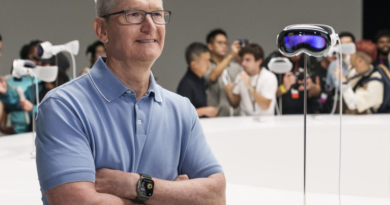Establishing this small habit can help improve your health
To reduce the harmful health effects of sitting, take a five-minute light walk every half-hour. That’s the key finding of a new study that my colleagues and I published in the journal Medicine & Science in Sports & Exercise.
We asked 11 healthy middle-aged and older adults to sit in our lab for eight hours – representing a standard workday – over the course of five separate days. On one of those days, participants sat for the entire eight hours with only short breaks to use the bathroom. On the other days, we tested a number of different strategies to break up a person’s sitting with light walking. For example, on one day, participants walked for one minute every half-hour. On another day, they walked for five minutes every hour.
Our goal was to find the least amount of walking one could do to offset the harmful health effects of sitting. In particular, we measured changes in blood sugar levels and blood pressure, two important risk factors for heart disease.
We found that a five-minute light walk every half-hour was the only strategy that reduced blood sugar levels substantially compared with sitting all day. In particular, five-minute walks every half-hour reduced the blood sugar spike after eating by almost 60%.
That strategy also reduced blood pressure by four to five points compared with sitting all day. But shorter and less frequent walks improved blood pressure too. Even just a one-minute light walk every hour reduced blood pressure by five points.
In addition to physical health benefits, there were also mental health benefits to the walking breaks. During the study, we asked participants to rate their mental state by using a questionnaire. We found that compared with sitting all day, a five-minute light walk every half-hour reduced feelings of fatigue, put participants in a better mood and helped them feel more energized. We also found that even walks just once every hour were enough to boost mood and reduce feelings of fatigue.
Why it matters
People who sit for hours on end develop chronic diseases including diabetes, heart disease, dementia and several types of cancer at much higher rates than people who move throughout their day. A sedentary lifestyle also puts people at a much greater risk of early death. But just exercising daily may not reverse the harmful health effects of sitting.
Because of technological advances, the amount of time adults in industrialized countries like the U.S. spend sitting has been steadily increasing for decades. Many adults now spend the majority of their day sitting. This problem has only gotten worse since the start of the COVID-19 pandemic. With the migration to more remote work, people are less inclined to venture out of the house these days. So it’s clear that strategies are needed to combat a growing 21st century public health problem.
Current guidelines recommend that adults should “sit less, move more.” But these recommendations don’t provide any specific advice or strategies for how often and how long to move.
Our work provides a simple and affordable strategy: Take a five-minute light walk every half-hour. If you have a job or lifestyle where you have to sit for prolonged periods, this one behavior change could reduce your health risks from sitting.
Our study also offers clear guidance to employers on how to promote a healthier workplace. While it may seem counterintuitive, taking regular walking breaks can actually help workers be more productive than working without stopping.
What still isn’t known
Our study primarily focused on taking regular walking breaks at a light intensity. Some of the walking strategies – for example, one-minute light walks every hour – did not lower blood sugar levels. We don’t know if more rigorous walking would have provided health benefits at these doses.
What’s next
We are currently testing over 25 different strategies for offsetting the health harms of prolonged sitting. Many adults have jobs, such as driving trucks or taxis, where they simply cannot walk every half-hour. Finding alternative strategies that yield comparable results can provide the public with several different options and ultimately allow people to pick the strategy that works best for them and their lifestyle.
Keith Diaz is an associate professor of behavioral medicine at Columbia University.
Learn how to navigate and strengthen trust in your business with The Trust Factor, a weekly newsletter examining what leaders need to succeed. Sign up here.



